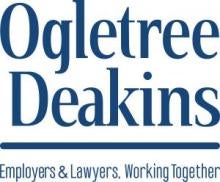As temperatures rise, the risk of heat-related illnesses in the workplace becomes a significant concern. To address this, the Nevada Occupational Safety and Health Administration (Nevada OSHA) has implemented a new regulation to protect employees from heat illness. Recently, Nevada OSHA released guidance for its heat illness prevention regulation. Nevada OSHA will begin enforcement of its heat illness prevention regulation on April 29, 2025.
Quick Hits
- Nevada OSHA has introduced a new regulation to protect employees from heat illness, with enforcement starting on April 29, 2025.
- The heat illness regulation requires Nevada employers with more than ten employees to create a written safety program and conduct a job hazard analysis (JHA).
- Employers are required to provide training on heat illness prevention, provide rest breaks, ensure access to potable water, and designate a person to monitor working conditions and emergency responses.
Scope and Coverage
The heat illness regulation applies to all employers in Nevada with more than ten employees, requiring them to establish written safety programs, and to employers that engage in the manufacture of explosives, regardless of the number of employees. Although employers that do not meet these criteria are exempt from the specific requirements of the heat illness regulation, employers must still protect their employees from recognized hazards, including heat illness, under the General Duty Clause.
Key Requirements
Job Hazard Analysis (JHA)
Employers must conduct a one-time, written JHA before a task is undertaken for the first time. There is no specific form or template employers must fill out. Instead, Nevada OSHA requires the following specific information be contained in the JHA:
- a list of all job classifications in which the majority of employees in those classifications have occupational exposure to heat illness for more than thirty minutes of any sixty-minute period, not including breaks;
- a list of all tasks and procedures, or groups of closely related tasks and procedures, performed by employees in which occupational exposure to heat illness may occur and which are performed by employees in the job classifications above;
- identification of working conditions that may cause occupational exposure to heat illness; and
- identification of measures to mitigate or eliminate the heat illness hazard if identified.
The JHA must be reviewed and revised if a task materially changes or following an accident. Nevada OSHA recommends involving employees in the JHA that perform the work due to their unique understanding of the job they perform. If an employer conducts a JHA and determines that employees are not exposed to hazardous working conditions that may cause occupational exposure to heat illness, then the employer should document its analysis in writing.
(Note: Nevada OSHA will request a JHA and issue citation(s) for noncompliance.)
Written Safety Program
The program must include provisions for potable water, rest breaks, cooling measures, emergency medical response procedures, identification and mitigation of any work process that may generate additional heat or humidity, and training.
Employers must designate a person responsible for monitoring working conditions and ensuring compliance with the safety program.
Monitoring and Emergency Response by the Designated Employee
The designated employee must monitor working conditions that could create occupational exposure to heat illness and have a plan for emergency medical response if an employee shows signs of heat illness.
Nevada OSHA recommends the designated employee be part of the crew or work unit performing the work. Nevada OSHA also recommends designating a backup designee.
For remote workers, the guidance recommends that employers should establish a monitoring plan that includes the frequency of monitoring, contingencies when responses are not provided, and emergency response procedures.
Training
Employers are required to train employees to recognize the hazards of heat illness and the procedures to minimize these risks.
The guidance recommends that employers provide training before employees begin their work duties, and refresh the training annually.
Nevada OSHA’s Best Practices to Mitigate or Eliminate Heat Illness
- Engineering controls: Use air conditioning, increase ventilation, provide cooling fans, and use reflective shields to block radiant heat.
- Administrative controls: Schedule hot jobs for cooler parts of the day, provide adequate drinking water, and use work/rest schedules.
- Personal protective equipment: Provide hats for outdoor work, cooling vests, and appropriate clothing to prevent heat stress.
- Acclimatization: Allow new workers to gradually acclimate to hot environments over seven to fourteen days and inform employees of health risk factors that may increase their susceptibility to heat illness.
Indoor Workplaces
For indoor workers in climate-controlled environments, including those who work in motor vehicles, the regulation does not require the employer to conduct a JHA, designate a person to perform certain functions, create a plan in the written safety program, or provide training. However, if the climate control system fails, employers must implement measures to address potential heat hazards until the system is restored.
Nevada OSHA’s Enforcement Guidance
In addition to programmed and unprogrammed inspections, Nevada OSHA will conduct inspections on “heat priority days,” which is any day where the temperature reaches or exceeds ninety degrees Fahrenheit. During inspections, Nevada OSHA compliance safety health officers will request the documents, including but not limited to the following:
- The current Nevada state business license
- Workers’ compensation coverage
- Injury and illness records (i.e., OSHA 300 Logs)
- Documents of rights and responsibilities
- The written safety program
- Employee training records
- Documentation of workplace inspections
- Documentation of employee disciplinary records
- Manufacturer’s information related to equipment related to the violation/inspection
- The JHA





 />i
/>i

